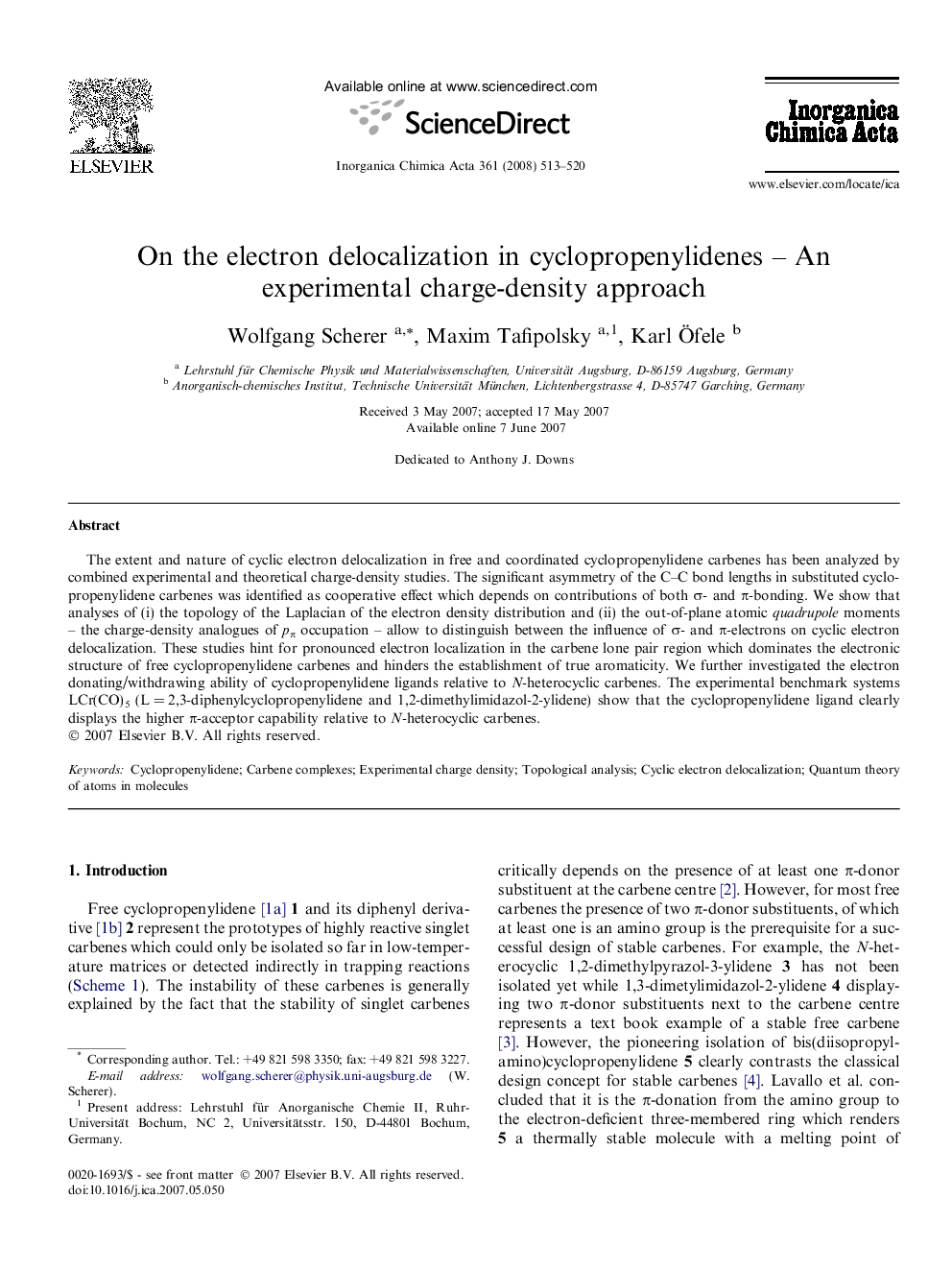| کد مقاله | کد نشریه | سال انتشار | مقاله انگلیسی | نسخه تمام متن |
|---|---|---|---|---|
| 1307461 | 975140 | 2008 | 8 صفحه PDF | دانلود رایگان |

The extent and nature of cyclic electron delocalization in free and coordinated cyclopropenylidene carbenes has been analyzed by combined experimental and theoretical charge-density studies. The significant asymmetry of the C–C bond lengths in substituted cyclopropenylidene carbenes was identified as cooperative effect which depends on contributions of both σ- and π-bonding. We show that analyses of (i) the topology of the Laplacian of the electron density distribution and (ii) the out-of-plane atomic quadrupole moments – the charge-density analogues of pπ occupation – allow to distinguish between the influence of σ- and π-electrons on cyclic electron delocalization. These studies hint for pronounced electron localization in the carbene lone pair region which dominates the electronic structure of free cyclopropenylidene carbenes and hinders the establishment of true aromaticity. We further investigated the electron donating/withdrawing ability of cyclopropenylidene ligands relative to N-heterocyclic carbenes. The experimental benchmark systems LCr(CO)5 (L = 2,3-diphenylcyclopropenylidene and 1,2-dimethylimidazol-2-ylidene) show that the cyclopropenylidene ligand clearly displays the higher π-acceptor capability relative to N-heterocyclic carbenes.
The extent and nature of cyclic electron delocalization in free and coordinated cyclopropenylidenes has been analyzed by combined experimental and theoretical charge-density studies. We further investigated the electron donating/withdrawing ability of cyclopropenylidene relative to N-heterocyclic carbenes. The experimental benchmarks LCr(CO)5 (L = 2,3-diphenylcyclopropenylidene and 1,2-dimethylimidazol-2-ylidene) show that cyclopropenylidenes clearly display a higher π-acceptor capability relative to N-heterocyclic carbenes.Figure optionsDownload as PowerPoint slide
Journal: Inorganica Chimica Acta - Volume 361, Issue 2, 15 January 2008, Pages 513–520